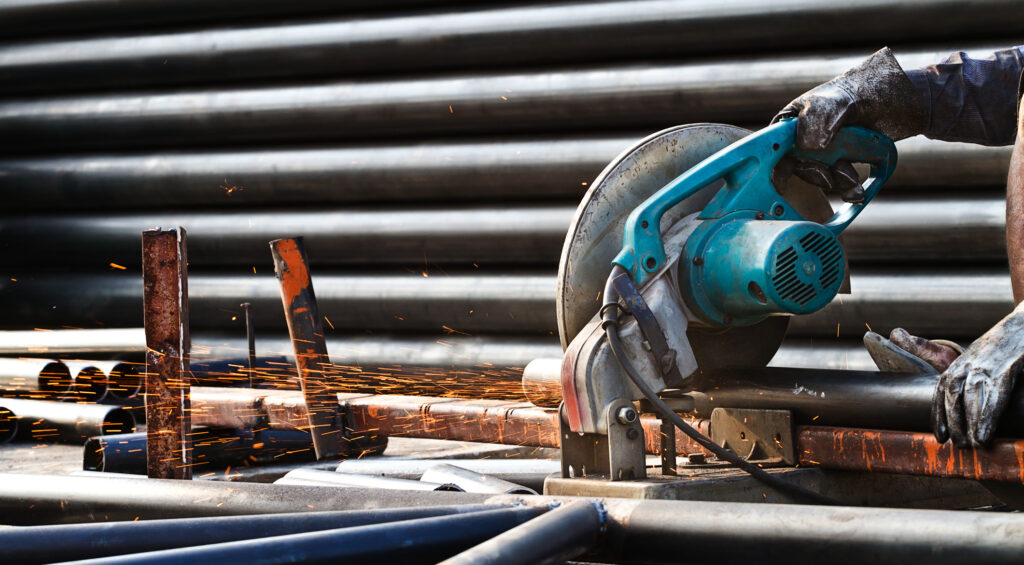What are some machine guarding standards in the construction industry?
Construction Accident - April 21, 2022
Construction sites can be dangerous places. Without proper warnings, protective gear, and safeguards in place, people can easily get injured. Fortunately, machine guarding standards keep people safe. They are meant to keep construction areas where dangerous machinery is used secure and clear to protect workers and others passing by.
There are four main types of safeguard barriers that prevent people from accessing dangerous areas where machines are in use. These measures are fixed, interlocked, adjustable, and self-adjusting safeguards.
Keep reading to learn more about machine guarding standards used in the construction industry in accordance with the U.S. Department of Labor’s Occupational Safety and Health Administration (OSHA) regulations for construction.

Machine guarding standards
Condition of tools
OSHA regulations require all tools, whether they are hand tools, power tools, or other equipment, to be in safe condition. Regardless of whether the tools belong to the construction worker or the construction company, the tools must be up-to-date and in a condition that is safe to use.
That sounds like a good rule, but it’s a little vague. There is not much specificity given to what constitutes a “safe condition.” At the very least, the tools are expected to be functional—not broken or defective.
Power-operated tools
In order to meet regulations, OSHA requires the use of acceptable safeguards with power-operated tools in situations where the tools are fitted with or able to work with safeguards.
Acceptable guarding
What is “acceptable” guarding? There are three types of safeguards that are considered acceptable under OSHA machine guarding standards. They are:
Barrier guards
Like we mentioned above, barrier guards protect people from getting hurt by machinery on construction sites. Fixed guards are physical guards built into the machine itself to protect users from harm. This is a popular option for barrier guards because it is both safe and simple.
The downside is that it can decrease visibility while using the machine. Interlocked guards shut off the power of the machine when the guard is open, but they are difficult to maintain and can be disengaged by the user. Adjustable guards are helpful because they can be adjusted to fit a variety of different tools, but they do not always completely protect the operator. Self-adjusting guards are likely the most readily available as they are mass produced, but they do not provide the most protection.
Two-hand tripping devices
These guards involve a safety mechanism on the machine that requires you to press two buttons at the same time to use the machine. The goal of this is to make it difficult to turn on.
Electronic safety devices
These components regulate the electrical current used by a power tool to keep it from short-circuiting and harming the operator.
Point of operation of potentially dangerous machines
One of the most dangerous areas is the point of operation. This is the place where the tool is touching and working on the material; if your hand or other body part gets near it, the injury could be serious and life-threatening. Industry standards require the use of point of operation guarding in this area away from the hands and body of the operator of the tool.
Guarding abrasive wheel machinery
This type of guarding protects the machine operator from the opening where the abrasive wheel is grinding. The flying sparks and shrapnel could cause harm. OSHA standards require these guards to be in use in order for the machinery to be operated.
Exceptions
The following tools do not have specifically defined machine guarding standards set forth by OSHA, making them potentially dangerous to use and posing a threat of injury to construction workers:
- Concrete breakers and vibrators
- Jack hammers
- Powered tampers
- Rock drills
Injured on a construction site? Horwitz, Horwitz & Associates can help.
It’s important that machine guarding standards are upheld in order to keep construction workers safe and prevent injury. Unfortunately, these safety requirements are not always followed, causing severe injuries that otherwise could be prevented.
Some people may accept their injury as an occupational hazard, but you can and should hold businesses and people accountable for their negligence. Not only does this help you get compensation for your injuries, but it also helps prevent future injuries for others.
The Chicago construction injury lawyers at Horwitz, Horwitz & Associates can help you with your personal injury case and get you the maximum amount of compensation available for your injury. Call us at (800) 985-1819 to schedule your free case consultation with an attorney.


